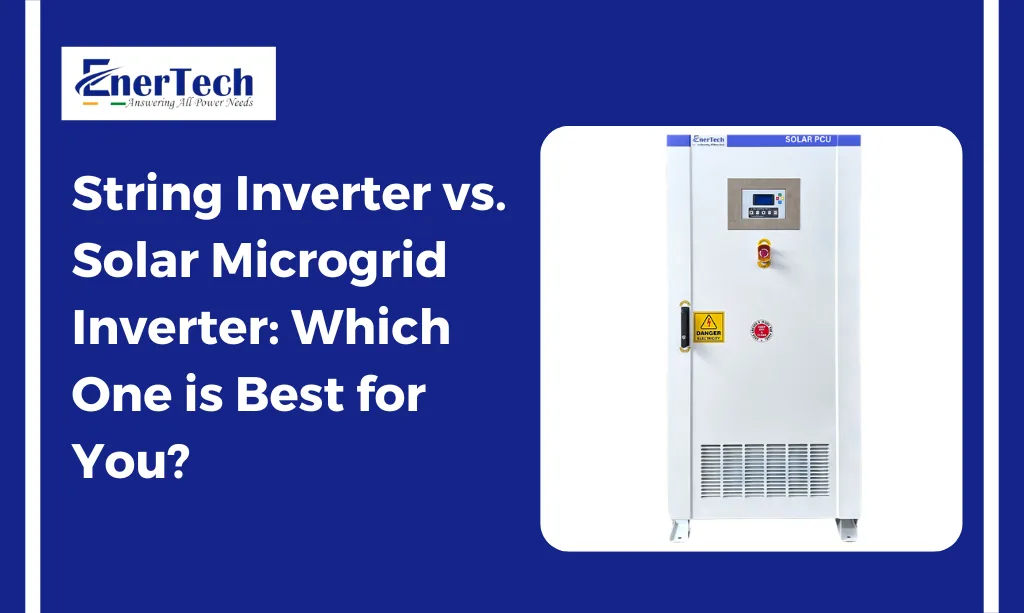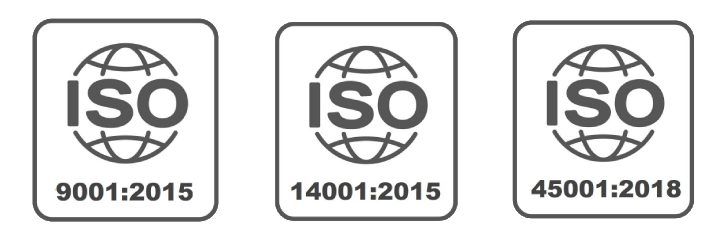So, you’ve decided to go solar. Great!
Your bank account and the planet will thank you in the long run later for this smart move.
As you progress, you will encounter two commonly used terms – string inverter and microinverter. They may sound a little technical. However, don’t let them confuse you. These are processing systems that help convert direct current (DC) from your panels into usable alternating current (AC).
Nevertheless, not every processing system is equal. Hence, choosing between a string inverter and a solar microgrid is a common dilemma, as we’ve seen.
Your choice between the two can significantly impact your system’s performance, efficiency, flexibility, and commercial benefits. So, how about comparing both and discovering the right alternative for your needs? Let’s do it then, highlighting the key differences.
Key Takeaways
- String inverters are economical. Microinverters are more performance-driven
- String inverters are simpler to maintain. Microinverters have more components but allow granular monitoring
- Expansion is challenging with string inverters but not with microinverters
- Microinverters are apt if your roof is shaded or has multiple orientations
- Microgrid inverters are good for battery integration and off-grid capabilities
What is a String Inverter?
Also called the central command, a string inverter comprises numerous panels (usually 6-12) wired in a string or series. The system involves DC electricity flowing from the string to a single, central inverter. Further, the inverter converts the DC power into AC.
What is a Solar Microgrid Inverter?
Microinverters are miniature inverters attached to the back of every solar panel. Each microinverter converts the DC power from the individual panel into AC. The system then combines the AC output and sends it to your home’s electrical panel.
String Inverter vs Solar Microgrid Inverter – Key Differences
Although both are inverters and perform the same functions, they are unique across various parameters. Let’s look at some of the factors that make them different.
| Aspect | String Inverter | Solar Microgrid Inverter |
| Concept | Converting DC from a series of panels. | Converting DC from each panel individually. |
| Shade Performance | Even if a single panel in a string is shaded, the output of the entire string is reduced to the lowest-performing panel’s output. | Individually, every panel is optimized. Hence, it doesn’t matter if a particular panel is shaded. |
| Location | Usually, indoors and wall-mounted or kept in a sheltered area. | Placed on the back of every solar panel. |
| Scalability | Expansion can be complex and costly. You might require a new inverter to add capacity. | Scaling is easier, more effortless and economical. All you have to do is add new panels with their microinverters. |
| Failure Point | The system has a single point of failure. So, if the inverter fails, the entire system stops functioning. | The system has multiple failure points. However, a single failure doesn’t affect the functioning of the entire system. |
| System Monitoring | Usually, system-level monitoring is offered. | Granular and panel-level monitoring, enabling you to review every panel’s performance. |
| Cost | The upfront cost is usually low. | The initial cost is higher due to individual components. |
| Installation | The initial setup is easy due to the typically simpler wiring. | The setup can be laborious, particularly because you have more components to install on your roof. |
| Efficiency | Efficient in sunny weather. | More uniform performance across varying conditions |
The Pros and Cons of String Inverters and Solar Microgrid Inverters
Now that you’ve seen significant differences between both the inverter types, let’s highlight their advantages and disadvantages.
String Inverters
Pros
- Straightforward design
- Simpler troubleshooting
- Low upfront cost
Cons
- System expansion can be challenging
- Inverter errors can halt the entire system
- Lifespan is typically short
Microinverters
Pros
- Panel performance is individual. Hence, it doesn’t impact the entire system
- System expansion is straightforward
- Inherent monitoring capabilities
- Consistent performance across different weather circumstances
Cons
- Higher cost
- Complicated repairs
- Multiple failure points
String Inverter vs Solar Microgrid Inverter – Which One is Right for You?
So now, let’s answer the second core concern of this debate. Which option is right for you, between a string inverter and a solar microgrid inverter? Let’s find out.
You can choose string inverters if;
- Your budget is tight
- You have a roof with full and consistent sun exposure
- You need simpler installation and fewer electronic parts
- You are a large-scale commercial facility where the per-watt cost matters
You can go for solar microgrid inverters if;
- Your roof is shaded in some areas
- You look to expand your solar energy ecosystem in the future
- You want to track the performance of each panel
- You want to create an energy storage
Final Words!
As stated earlier, choosing between a string inverter and a solar microgrid inverter can be crucial, based on your objectives. So, we hope the above helps you make an informed decision. However, connect with us at sales@enertechups.com if you need specific expert consultation and explore solar inverter suited to your requirements and vision.




